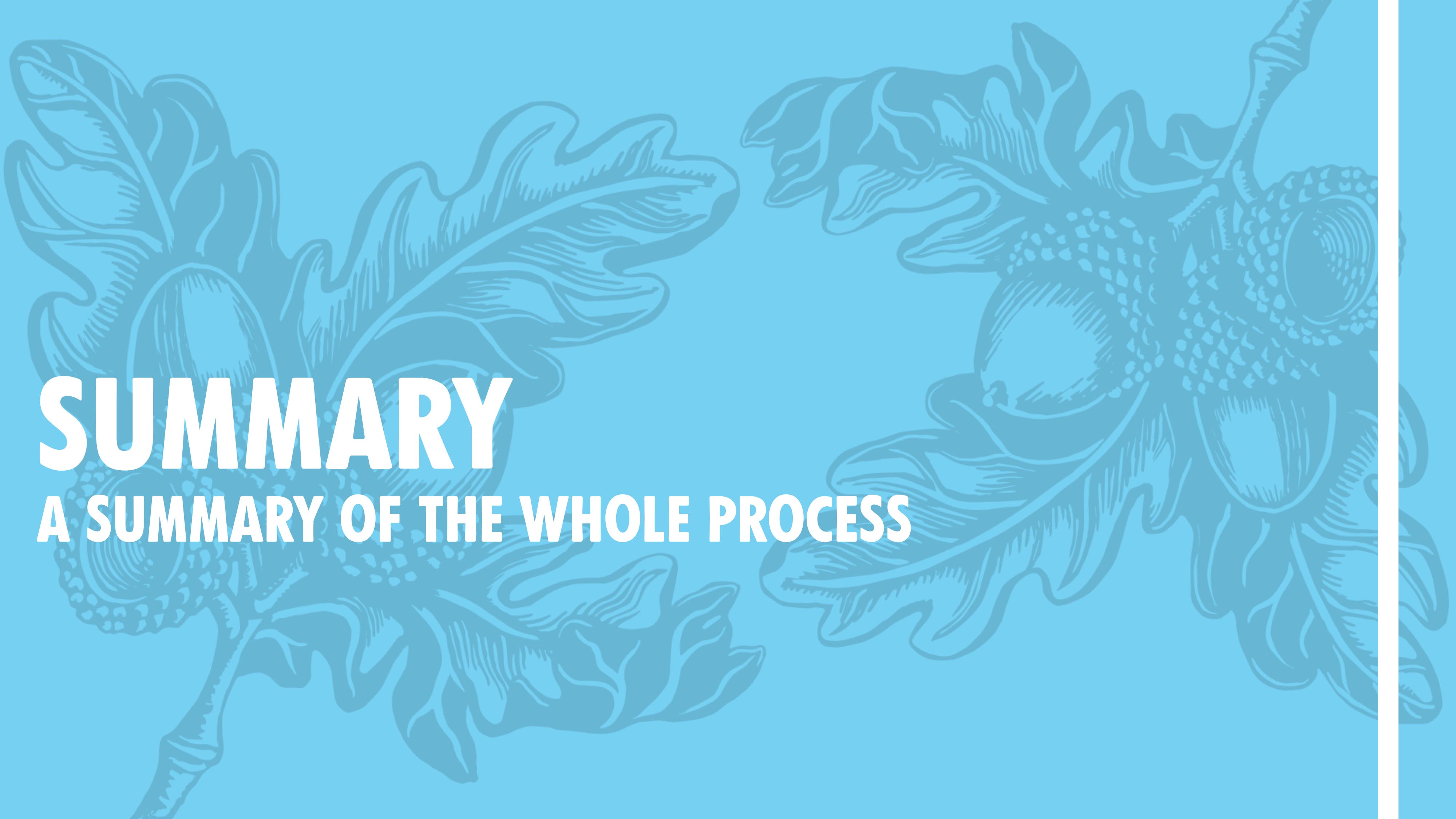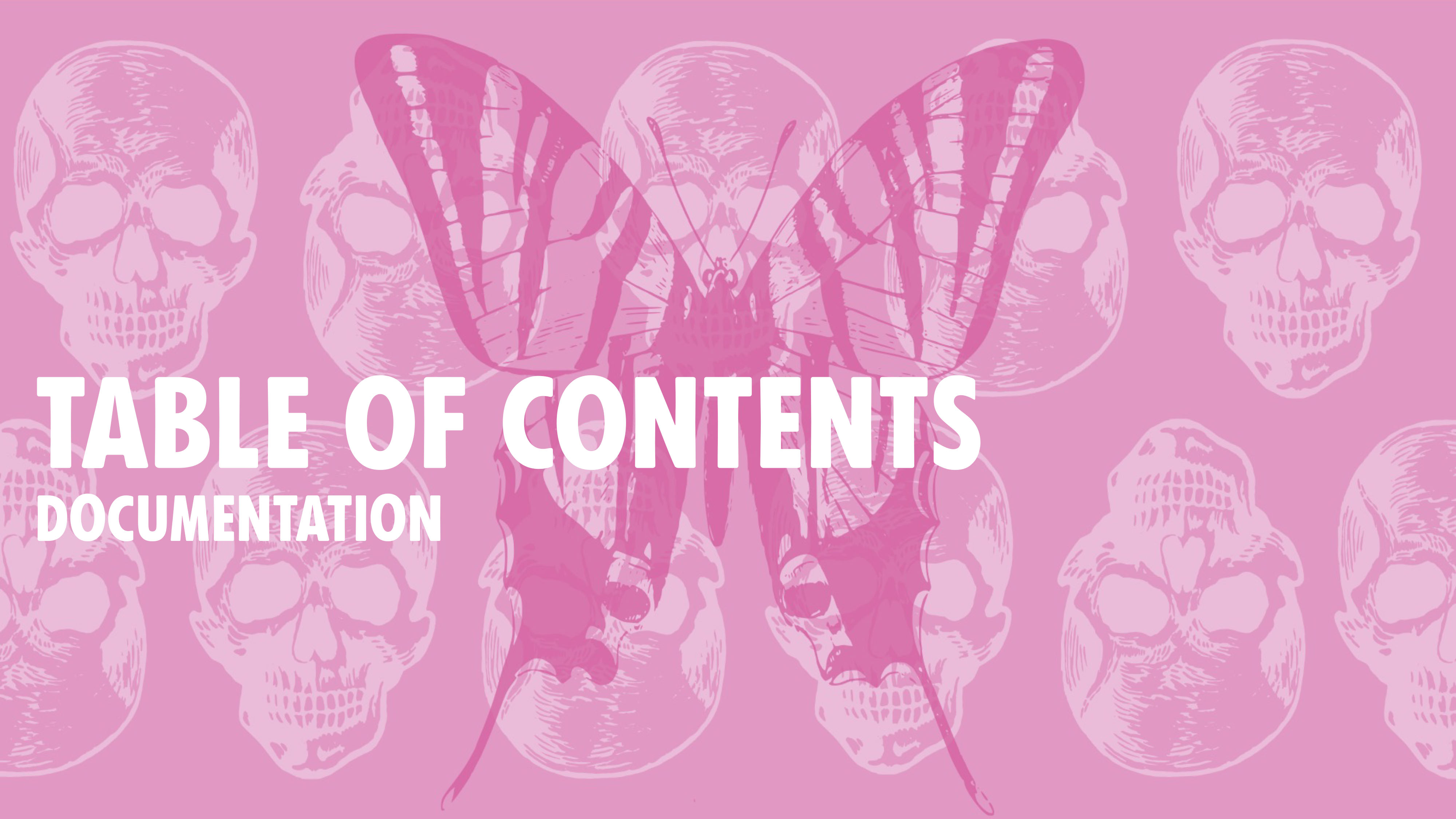Week 2
Written on August 18th, 2023 by Laura Weller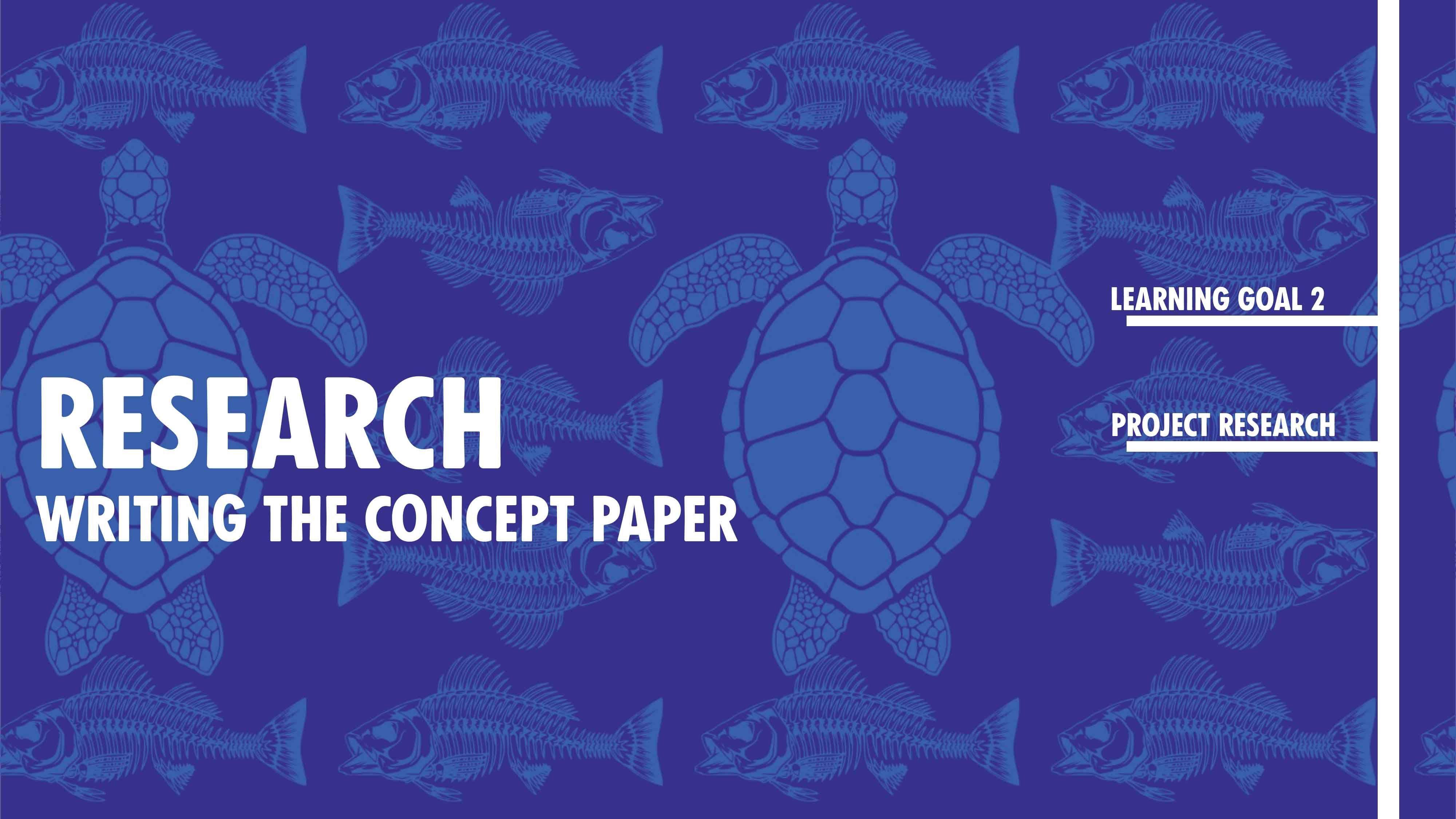
Here you can see my Research paper for my concept
[Research paper][file:///Users/lauraweller/Documents/AMFI/Internship/Week%201,%202,%203%20&%204/Research%20paper/Research%20paper-%20Global%20aCtIVISm%20through%20open.pdf]
Global aCtIVISm through open-source bio fabricated garments
“How can bio fabricated garments support climate activism of Extinction Rebellion?”
Abstract
This article shows how open source created garments from biofabricated material support climate activism within Extinction Rebellion. Based on this paper will, a collection of garments from biomaterials that can be worn during a protest of Extinction Rebellion will be created.
Extinction Rebellion (XR) is an autonomous, decentralized, international and politically non-partisan movement using non-violent direct action and civil disobedience to persuade governments to act justly on the Climate and Ecological Emergency. This paper dives deeper into the ideology, past and strategy of XR and refers to the 3 demands of XR: (1) “Tell the truth”, (2) “Act now” and (3) “Go beyond politics”. It looks at the relationship between protest and fashion by looking at current examples of a strong relationships - MAGA, Hong Kong Protests and Women’s March - and by looking at factors that cause such strong bond - fashion can signal social identity, create community, show solidarity and act as an agency against the current regime. Furthermore, it shows that the freedom in form of protest of Extinction Rebellion causes the opportunity for artivism and that artivism in XR has so far shown successful due to its’ ability to evoke emotions, confront us with our contemporary reality and due to XRs’ fitting communication style. Last it formulates a basic understanding of biofabricated materials - biofabricated ingredients that are afterward mechanically or chemically processed in order to make a macroscale material structure – and argues that these materials fit the movement of XR due to the demand of XR which is rooted in the ecological crisis whereas biomaterials can play a role in the solution of this same ecological crisis. The usage of biomaterials for XR is therefore very plausible.
Introduction
On the 9th of September 2023 Extinction Rebellion (XR), an international climate activist organization, has announced a new protest on the A12 at Den Hague, The Netherlands (see fig 1). This protest is supposed to be XRs’ 7th protest at the A12. The former protests have been, according to the movement, massive successes due to high media attention and a big turn-out of people joining the protest. This September, XR decided to change the protest a little. While keeping their demand – stop fossil fuel subsidies – the shape of protest is different. Instead of going one day, they want to come back every day from the 9th of September onwards until cabinet stops subsidies to the fossil fuel industry. This means, XR is asking citizens to show civil disobedience every day from the 9th of September onwards by blocking the A12 road at Den Hague until their demand is met.
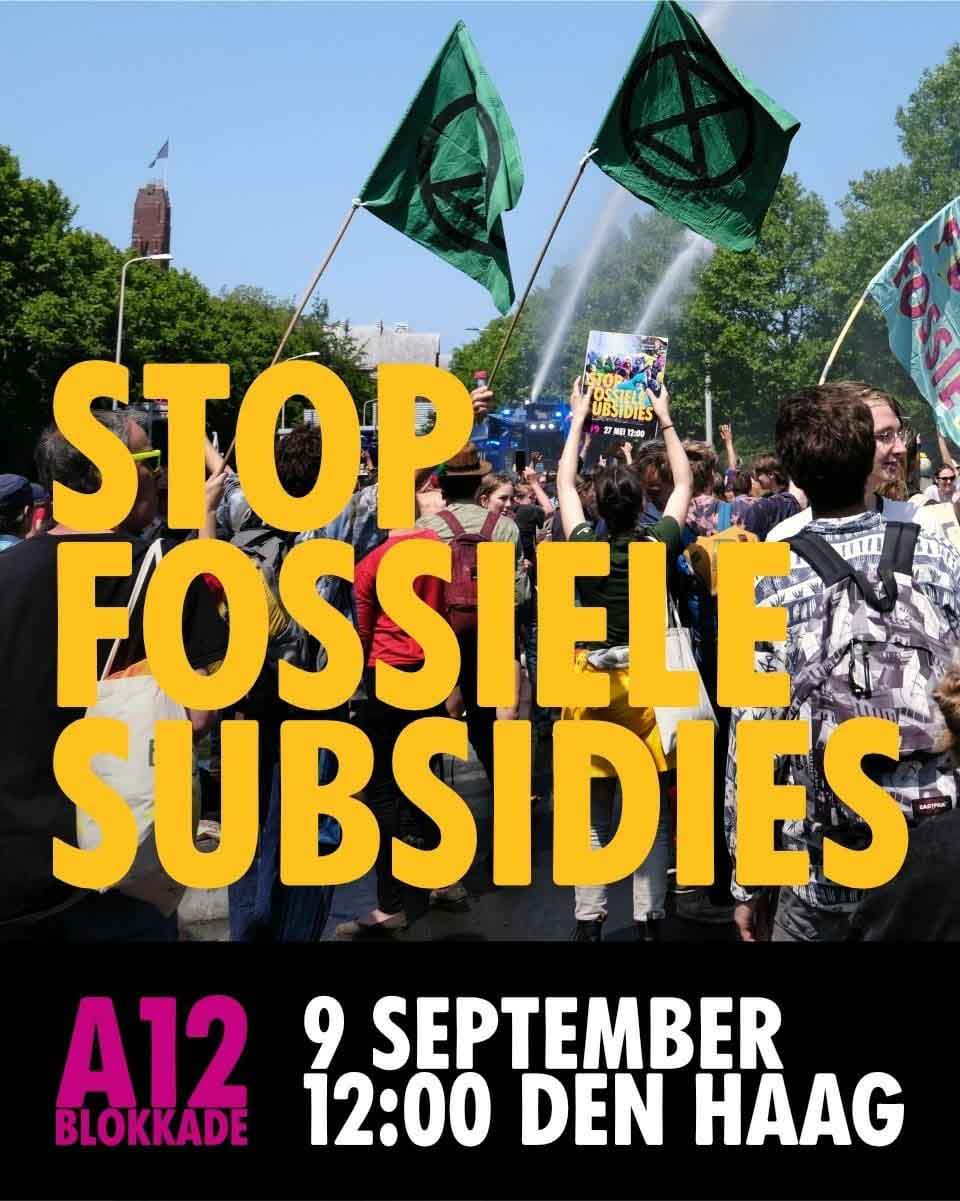
In this article I will dive further into how fashion can help play a role in this new form of protesting. More specifically: In this article I will answer the question: How can open source created garments from biofabricated material support climate activism within Extinction Rebellion? In order to answer this question, I will dive deeper into XR, their ideology, their past and their strategy. Then I will investigate relationships between fashion, other social protest movements and social identity. Third, I will look at the prospects of XR and its relationship to art. Last, I will give an introduction into bio fabricated materials and their relationship to fashion. Here I bring XR and the relationship between fashion and protest together to argument how bio fabricated garments can support climate activism of Extinction Rebellion. Based on this paper I will then create bio fabricated materials and build a lineup of garments that can be potentially worn during a blockade at the A12.
Extinction Rebellion: how did it start?
Extinction Rebellion was born during an assembly of British activist on Parliament Square in Londen on the 31st of October 2018. Activists gathered to announce a Declaration of Rebellion against the UK. This created a whirlwind of activism in England in the weeks after: six thousand rebels converged on London to peacefully block five major bridges across the Thames, trees were planted in the middle of Parliament Square where a hole was dug to bury a coffin representing the future and rebels super-glued themselves to the gates of Buckingham Palace while reading a letter to Queen Elizabeth. The call to rebel in England swiftly became global. Many groups started popping up in the weeks after, following the example of London: rebelling by showing non-violent direct action and civil disobedience. Nowadays, all these groups together show Extinction Rebellion: an autonomous, decentralized, international and politically non-partisan movement using non-violent direct action and civil disobedience to persuade governments to act justly on the Climate and Ecological Emergency (What is XR | Extinction Rebellion, z.d.). Extinction Rebellion has 3 demands:
- Tell the truth. With this XR demands governments to tell the truth about climate change by (a) declaring a climate and ecological emergency and (b) working with other institutions to communicate the urgency for change.
- Act now. With this XR demands governments to act now to halt biodiversity loss and reduce greenhouse gas emissions to net zero by 2025.
- Go beyond politics. With this XR demands governments to create and be led by the decisions of a Citizens’ Assembly on climate and ecological justice. Any person or group who supports these values can organize autonomously an action in the name and spirit of XR if the action fits in the 10 values of XR (Extinction Rebellion, 2022). This way, power within XR is decentralized. The 10 values of XR are:
- Share their vision of change: create a world that is fit for the next 7 generations.
- Set the mission on what is necessary: mobilizing 3,5% of the population to achieve systematic change.
- Have a regenerative culture: create a culture which is healthy, resilient and adaptable.
- Challenge yourself and the toxic system: leave your comfort zone to act for change.
- Value reflecting and learning: follow the cycle of action, reflection, learning and planning more action.
- Welcome everyone and every part of everyone: work actively to create safer and more accessible spaces.
- Actively mitigate for power: Break down hierarchies of power for more equitable participation.
- Avoid blaming and shaming: the system is toxic; no individual is to blame.
- Be non-violent: use a non-violent strategy and tactics as the most effective way to bring about change.
- Be based on autonomy and decentralization: Collective create the structures we need to challenge power.
To become a member or a group within XR, XR offers trainings to individuals. These trainings are called action trainings and are (at least in the Netherlands) hosted in every big city. Individuals can show up to one of these trainings where an older member of XR talks about XR, their values and their demands. The action training also includes an explanation of the upcoming big action and what the individual can expect to happen during the action. Lastly the individuals during the training form “affinity groups”. These are small groups that can work together to set up actions or join actions. After having joined one of the trainings you are a member of XR, and you can start participating in or organizing climate actions.
The relationships between fashion and protest
Probably one of the the best-known examples of a strong bond between fashion and protest can be found in “les gilets jaunes”, in other words the yellow vests. What was triggered by a protest against the increased fuel taxes, quickly escalated into a much broader protest movement: a progressive populistic calling for social and economic justice (Wilkin, 2020). Les gilets jaunes were known for wearing yellow workers vests. Hence, their protest movement is named after their fashion. The protest movement influenced high fashion: In the same year of les Gilets Jaunes, a man arrived at Paris Fashion week with an oversized, six-foot-tall haute couture version of Le Gilet Jaune (Benda, 2021).

Les Gilets Jaunes is one of many examples where fashion and social/political movements meet. Some other examples are the “Make America Great Again” cap from Trump (MAGA-CAP) (fig. 3), the umbrellas at the Hong Kong protests (fig. 4) and the pink pussy hat worn at the Women’s March (fig. 5).

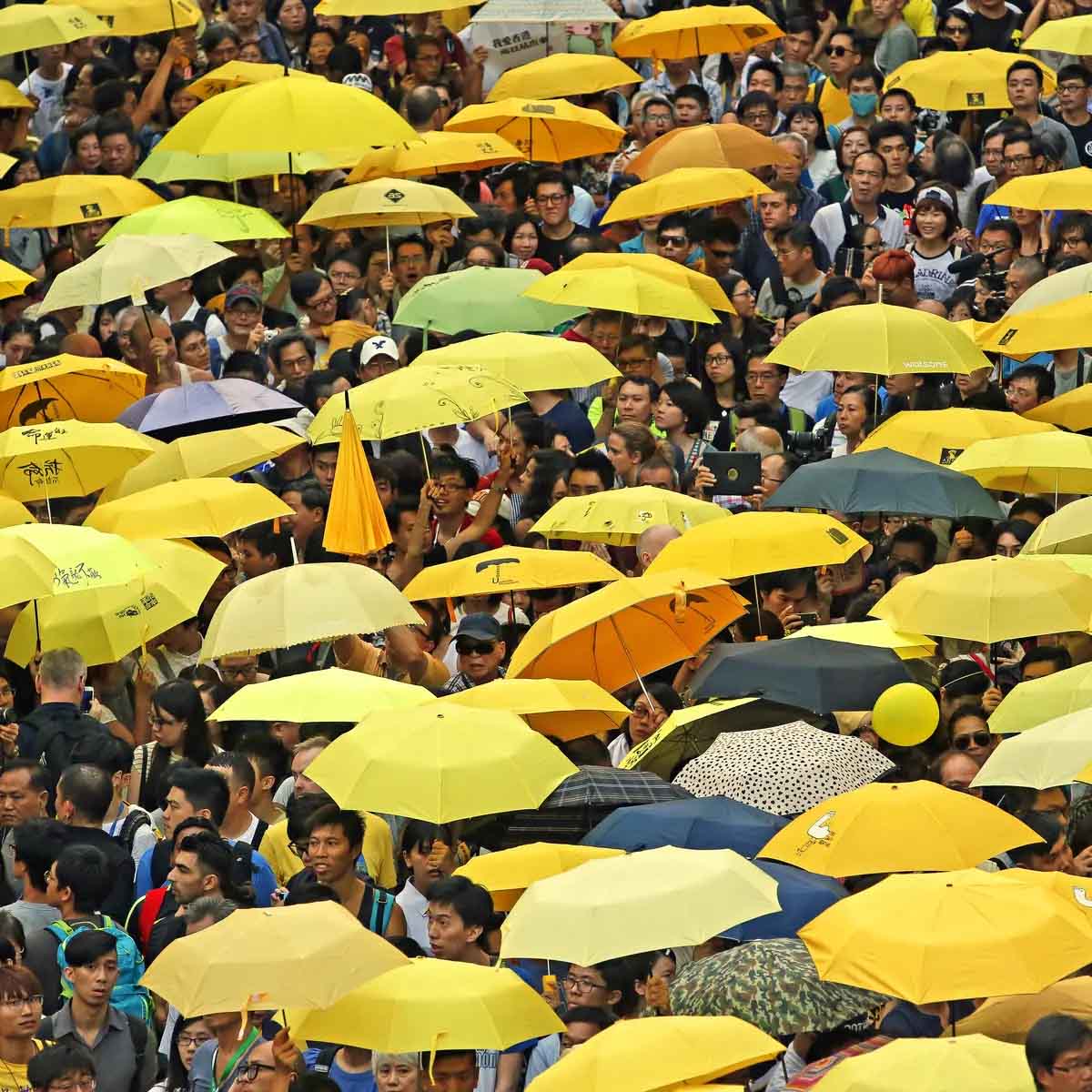
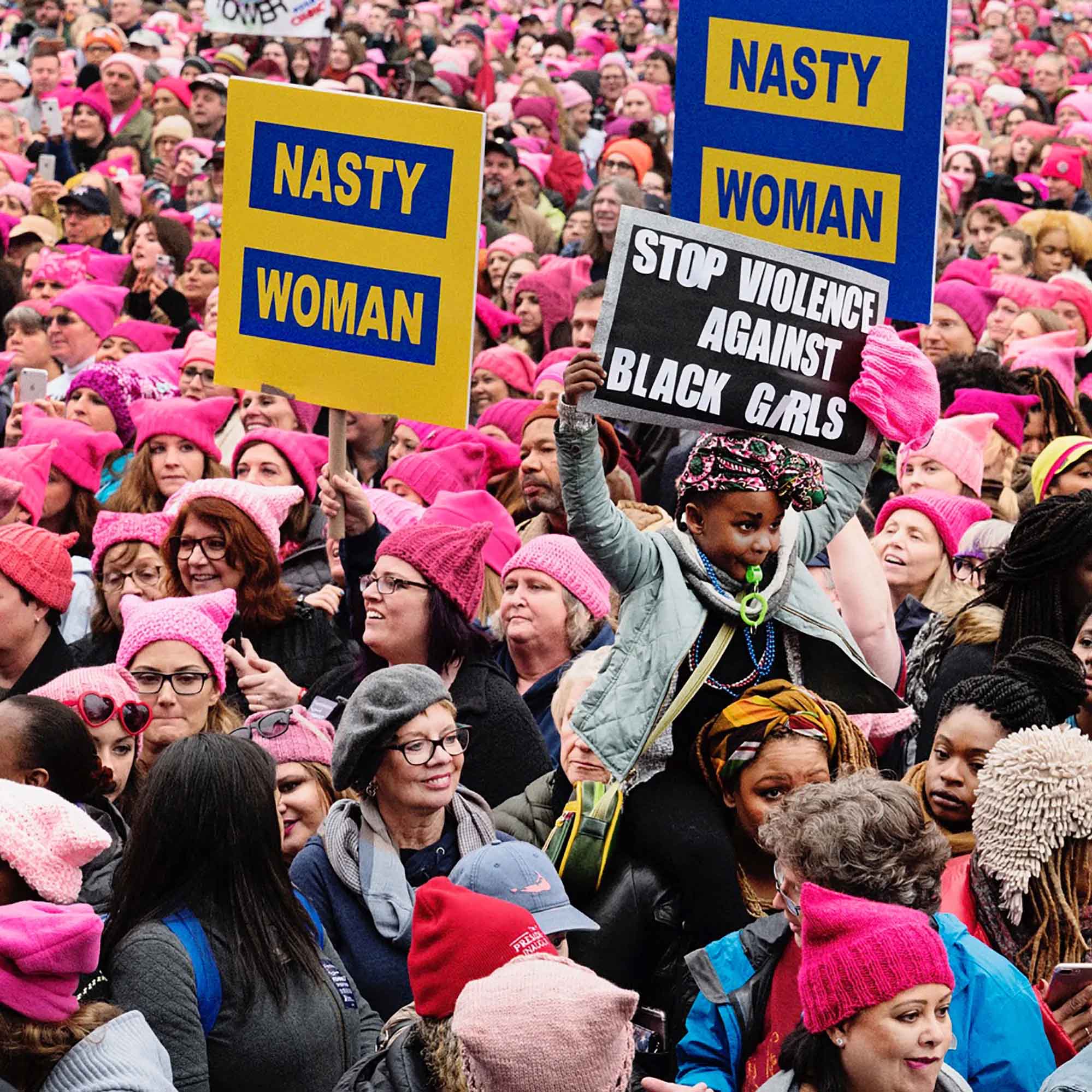
Even though these examples are all examples taken from the current zeitgeist, the relationship between fashion and protest had long existed before. Benda (2021) even argues that “as long as there have been protest movements, citizens, activists and freedom fighters have used art and design to amplify, elevate, articulate and define their causes”. She refers to the Black Panthers’ beret, Ghandi’s humble topi hat and the red dresses in the #metoo movement. But even before that, dress has been a key ingredient in protest (Lurie, 1981; Price, 2017). In the 1920s and 1930s a wave of feminism during the baby boomers entered Western culture (Dai, Xia & Zhao, 2022). In this period, Coco Chanel tried to let women play the role of men by letting them wear black clothing, show their calves in the Little Black Dress and express their sexuality, therefore recon-structing femininity through clothing (Marcangeli, 2015). And during the peacock revolution of the 1960s, straight men started to incorporate fashioning styles of gay men (Arida, 2017; Bengry, 2010) and color and style became no longer exclusive to gender (Dai, Xia & Zhao, 2022). Accompanied by this revolution, Yves Saint Laurent took the already slightly blurred line between masculine and feminine fashion created by designers such as Coco Chanel to a next stage by introducing the pant suit, wearable for both men and women (Reilly & Barry, 2020; Rosa, 2013).
In other words, the relationship between fashion and activism has existed for already a long time. A key in this relationship is the relationship between social and cultural identity and dress (Gulliver, 2022). Davis (1988) writes that “in the dressing there are types of coded cultural identities and people interact with them through the garments”. One of the easiest examples in this is job uniforms. Based on their dress, we know a police officer is a police officer, a nurse is a nurse, a businessman is a businessman, etc. The clothing a person wears can give them a social or cultural identity (Pratt & Rafaeli, 1997). Prat and Rafaeli (1997) researched social identities of staff in a hospital unit. The foundings of this research show that even within jobs there is a subdivision in clothing, whereas management versus staff nurses or day versus evening shift nurses wore slightly different clothing to express their difference within their social identity as nurse.
“Our analysis of the data suggests that informants used particular forms of dress (e.g., street clothes or scrubs) to represent a variety of issues related to their social identities. The data further revealed that these patterns of individual responses were not random; rather, choices of particular dress forms reflected distinct subgroups. Two important characteristics that defined subgroups were shift membership (day versus evening shift) and hierarchical membership (management versus staff nurses). Each of these subgroups preferred a particular dress option because of the social identity issues it represented. To illustrate, day shift nurses typically preferred street clothes because they preferred the rehabilitation unit identity, while evening and night shift nurses preferred scrubs because they represented the acute care unit identity. In contrast, issues surrounding professional identity divided floor nurses from managerial nurses. Thus, our analysis revealed that managers tended to prefer street clothes, which represented a patientcentered identity, and floor nurses preferred scrubs, which symbolized an autonomous professional identity.”
Even though the relationship of social and/or cultural identity and dress can be easily shown in job uniforms, research also shows the relation outside the working environment. As Craik (2009) writes, fashion can codify a degree of uniformity within groups and therefore signal social identity. Examples can be seen in for example subcultures, which are shown in the book Exactitudes (Versluis & Uyttenbroek, 2002). Versluis & Uyttenbroek (2002) portray in their work Exactitudes more than three thousand different social types. Started in 1994 in the streets of Rotterdam, this work portrays individuals that share a set of defining visual characteristics that identifies them with specific social types, such as Gabbers, Glamboths, Ecopunks, Corporate boys, etc. See below here some of the pages of their work.
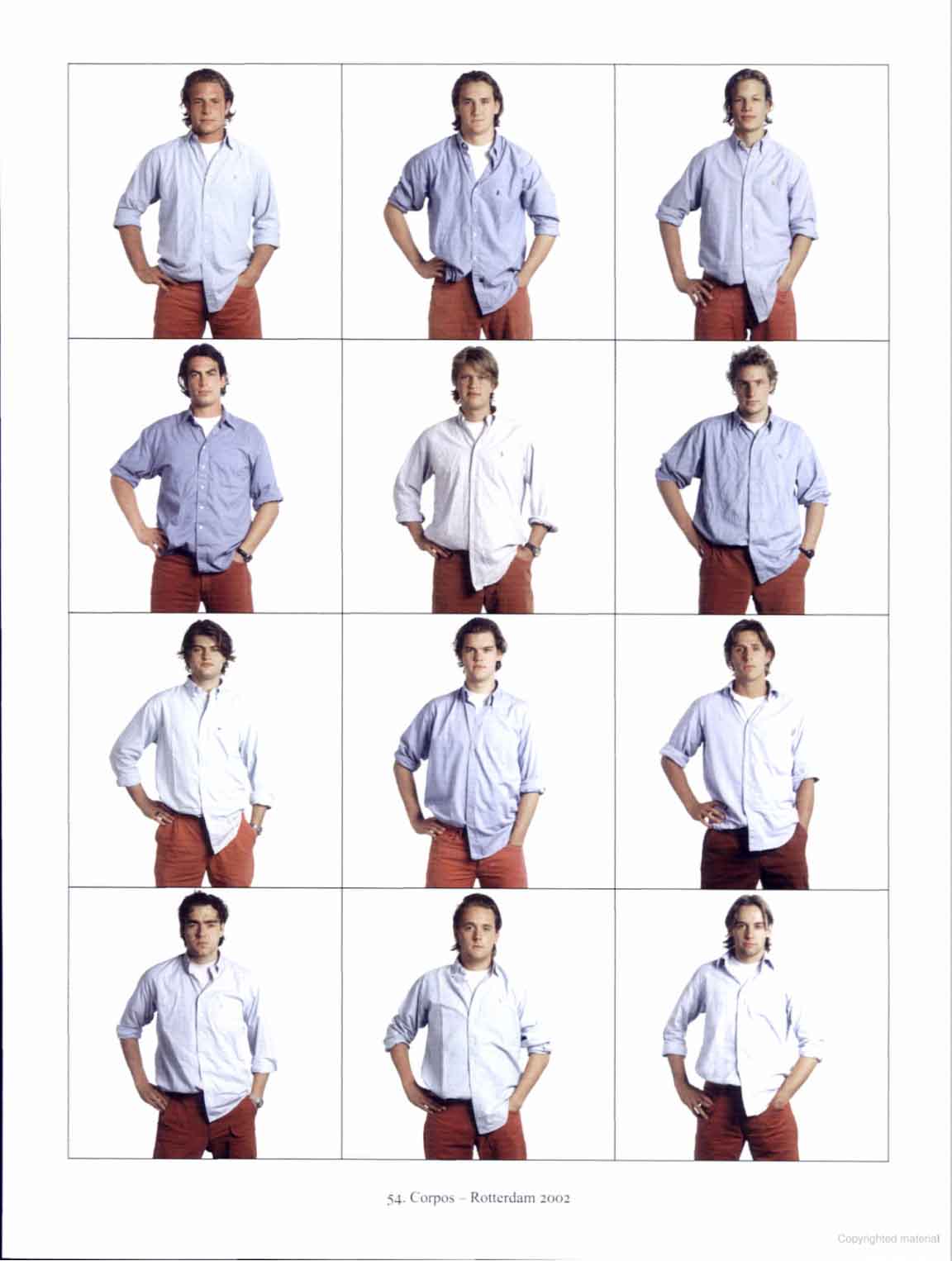
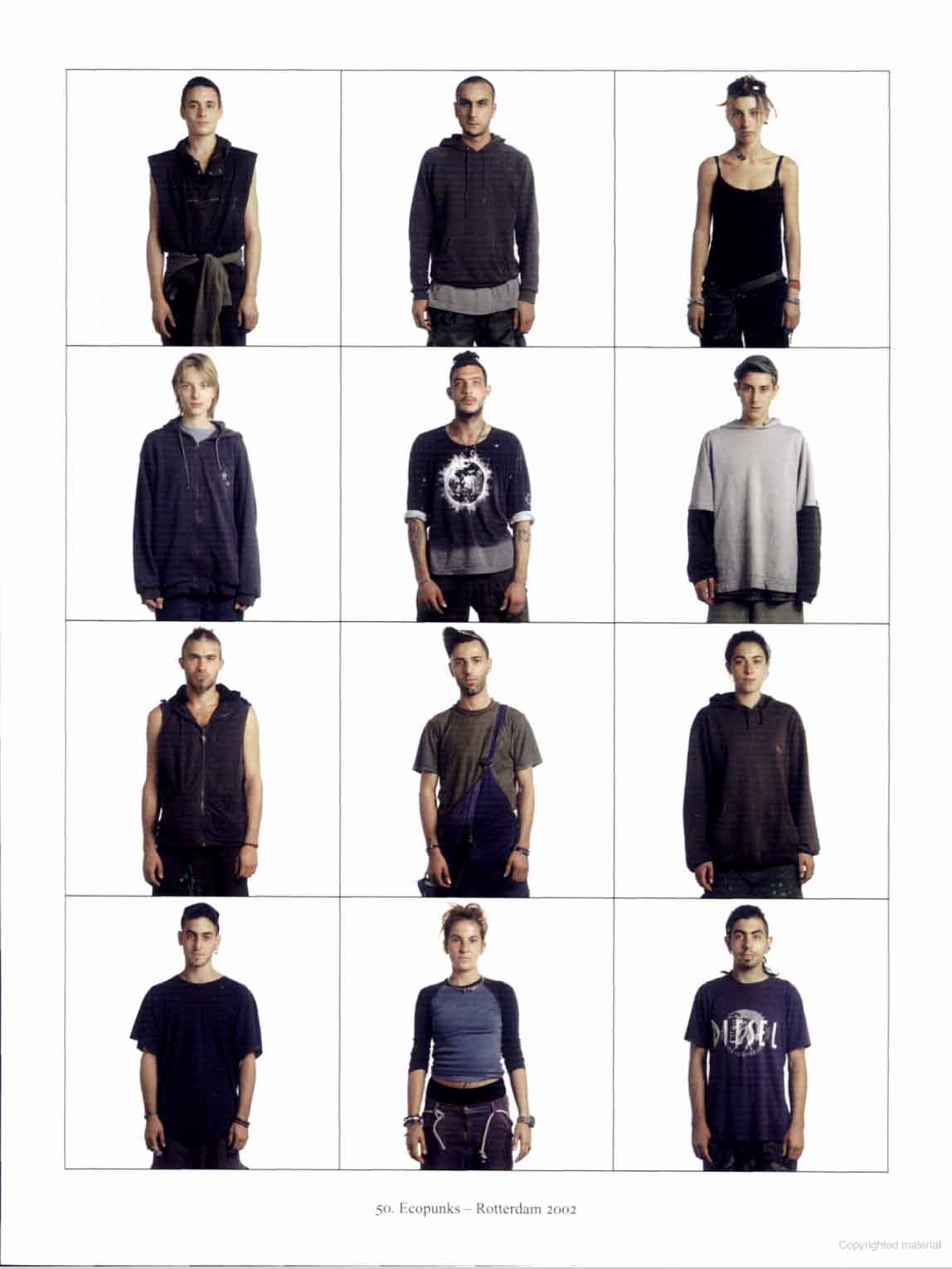

Besides signalling a social identity, fashion can also build community. Barry & Drak (2019) show in their research the effect of fashion in queer communities. They argue that “engaging queer and trans youth in fashion hacking fosters community and skills that can be mobilized beyond these settings to affirm their intersectional identities and resist oppressive movements, policies, discourses and systems.”. On top of signalling social identity and creating community, fashion can also show solidarity and can become a way to show shared pain and grievances (Gulliver, 2023) and it can act as an agency against the current regime (Yangzom, 2016). Yangzom (2016) shows this by arguing that “clothing is the materialization of the political consciousness of the movement and symbolically acts as a mechanism of communication in shaping its political goals” and supports this by showing how important the clothing style of the Tibetan population in China is in forming an agency against the current Chinese regime. In sum, fashion and activism have a strong bond. This can be seen in examples such as MAGA, the Hong Kong protests and the Women’s March. Gulliver (2023) argues that reasons for such strong bond are that fashion can signal social identity, create community, show solidarity and act as an agency against the current regime.
Extinction Rebellion: and where does it go?
XR has many ways in which they protest, as there are many affinity groups creating their own shape of protest. If the protest abides by the values and supports the demands of XR, the affinity groups are free to protest however they like. For example, XR has protested in the form of die-ins/sit-ins, blockades, music/dance/theatre performances and postering at public space. Every affinity group and/or individual creates their own kind of protest, depending on what the affinity group/individual prefers. Hence, the freedom within protest of XR leaves much room for creativity in the field of activism.
| Theoretics and Researchers such as Peter Weibel wrote about this new interdisciplinary gap between activism and creativity. They say artivism is the first new art form of the twenty-first century (Weibel, 2015). Extinction rebellion uses artivism in many forms. One example is the Dutch Extinction Rebellion Fashion Action; a group of activists who organize fashion related protest, such as guerrilla shows in which they design their own clothes and protest in them by creation a fashion show and walking down their catwalk (CAMPAIGNS | XR Fashion Action, z.d.). Another example is the Red Rebel Brigade; a group of activists who got founded during an XR protest in 2019 and who “are an international performance artivist troupe dedicated to illuminating the global environmental crisis and supporting groups and organisations fighting to save humanity and all species from mass extinction” (Red Rebel Brigade - Red Rebel Brigade, 2019). The Red Rebel Brigade always dresses in red clothing, often veils looking garments, which creates beautiful juxtaposition imagery and shows unity through clothing. Activism, such as the activism from XR Fashion Action and the Red Rebel Brigade, in which artistic practices - among which performance - are used, is in this paper conceptualised as artivism. |
Artivism is becoming a key ingredient in protest of the 21st century, and therefore also a key ingredient in the protest of XR. Adding art to activism can according to De Graaf (2023) present us a new perspective that is able to confront us with our contemporary reality. An example of this is the deep fake video of Mark Rutte named “Beste Mark Rutte, zo klink je als je #klimaatleiderschap toont”, created by De Correspondent.
Besides presenting us a perspective that can confront us with our contemporary reality, artivism can also evoke emotions according to De Graaf: “Art is an affective expression that evokes feelings in its viewers: “it moves a person’s heart, body and soul” (Duncombe, “Does it Work” 118). Using artistic practices to communicate an activist message will therefore result in a deeper, more anchored experience for its spectators.” An example of this is the movie “Cowspiracy” where viewers were significantly more aware of the environmental consequences of meat consumption, had a more negative attitude towards eating less meat and had a higher intention to reduce meat consumption after watching the documentary (Pabian et. al., 2020).
While artivism evokes emotions and presents us a new perspective that can confront us with our contemporary reality, it also appears to be effective. Berglund & Schmidt (2020) empirically examined the design of five art-actions by Extinction Rebellion Netherlands, and their reception by a movement-internal and -external audience. They concluded that all actions influenced the internal audience, whereas not all actions influenced the external audience. To reach the external audience, the artist needs to balance a salient image, a specific call for action and a positive outcome all together in the art (Berglund & Schmidt, 2020).
Last, artivism also fits the communication style of XR. Studies show that XR makes use of more emotional language and content on their social media platform Instagram then other activist movements (Kober, 2022; Fagerholm, Göransson, Thompson, & Hedvall, 2023). As discussed above, artivism evokes emotions. Therefore, it could be argued that the communication style of XR fits artivism.
In sum, the freedom in form of protest of Extinction Rebellion causes the opportunity for artivism. Artivism in XR has so far shown successful due to its’ ability to evoke emotions, confront us with our contemporary reality and due to XRs’ fitting communication style. Furthermore research of Berglund & Schmidt (2020) has also shown that art within XR is actually effective to inner and outer audience of the movement.
Biofabricated materials and their relationship to fashion.
A biomaterial is a term used to indicate materials that have non-specific biological association. Within biomaterials, there exists biofabricated materials. Biofabricated materials are produced by living cells (e.g. mammalian) and microorganisms such as bacteria, yeast and mycelium. The material exists out of biofabricated ingredients (living cells and microorganisms such as bacteria, protein, etc.) that are afterward mechanically or chemically processed in order to make a macroscale material structure. This processing can be done through yarn spinning, 3d printing, laser cutting, and many more (Biofabricate and Fashion for Good, 2020). To understand the relation of biomaterials and biofabricated materials better, Fashion for Good and Biofabricate (2020) have created a chart to show the term biomaterials and everything that it includes (see fig. 2).
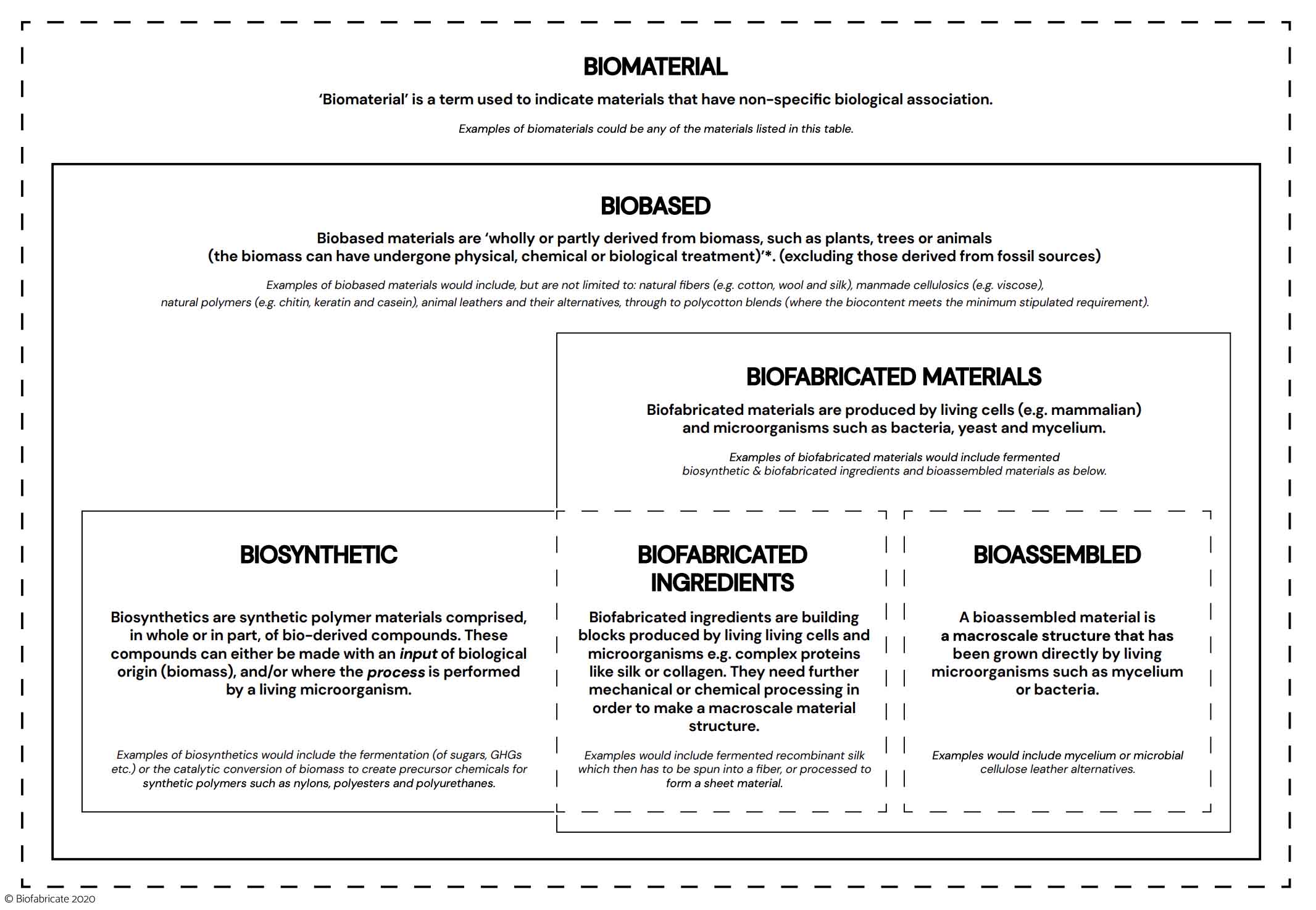
The relationship between biofabricated materials and fashion is rooted in one of the biggest problems within the fashion industry: its ecological footprint. The fashion industry is the second-most-polluting industry worldwide, only exceeded by the petroleum industry (FRIEDMAN, 2018; Barauna, Renck, Santos & Tomé, 2022). One of the reasons why the fashion industry is so polluting comes from the raw materials used in the production of textiles. Many of the raw materials are created through non-renewable natural resources, of which the industry uses around 98 million tons of each year (MORLET et al., 2017). These non-renewable resources are also used for synthetic fibers such as polyester. Opperskalski et al. (2020) showed that polyester was the most manufactured synthetic textile fiber in the world in 2019, corresponding to 58 million tons of manufactured raw materials, equivalent to 52% of the total textile fiber produced in the world that year. On top of that, polyester, and many other synthetic fibers leaves micro plastics in the environment after being manufactured into a garment (for example through washing the garment) (Šaravanja, Pušić & Dekanić, 2022).
Using an alternative to synthetic fibers (among which polyester) that is not depleting our non-renewable resources and is better for the environment is a search that the whole fashion industry is currently looking for (D’Itria & Colombi, 2022). In other words: the industry is looking for solutions to solve their ecological footprint. Biomaterials and therefore biofabricated materials is one of these solutions (Barauna, Renck, Santos & Tomé, 2023).
As for extinction rebellion, a key demand of the movement is to demand governments to tell the truth about climate change and biodiversity loss ((Extinction Rebellion, 2023). It is safe to assume that people joining XR are therefore people who worry about climate change and biodiversity loss. Using material that is highly unsustainable is therefore not massively supported within the movement. Therefore, working with material that is highly sustainable – and even biodegradable – can solve an issue XR is still facing: XR uses many facets of artivism but is not keen on using materials derived from non-renewable resources, while those materials are necessary in order to create forms of artivism. This is where biofabricated materials can play a huge role. They able the movement to express themselves during protest while still staying in line with their sustainable vision. Therefore, it could be argued that the usage of biomaterials in artivism of the XR movement broadens the possibilities for Extinction Rebellion members and artists to create materials that support the movement.
Conclusion
This article shows how open source created garments from biofabricated material support climate activism within Extinction Rebellion. Based on this paper will, a collection of garments from biomaterials that can be worn during a protest of Extinction Rebellion will be created.
Extinction Rebellion (XR) is an autonomous, decentralized, international and politically non-partisan movement using non-violent direct action and civil disobedience to persuade governments to act justly on the Climate and Ecological Emergency. This paper dives deeper into the ideology, past and strategy of XR and refers to the 3 demands of XR: (1) “Tell the truth”, (2) “Act now” and (3) “Go beyond politics”. It looks at the relationship between protest and fashion by looking at current examples of a strong relationships - MAGA, Hong Kong Protests and Women’s March - and by looking at factors that cause such strong bond - fashion can signal social identity, create community, show solidarity and act as an agency against the current regime. Furthermore, it shows that the freedom in form of protest of Extinction Rebellion causes the opportunity for artivism and that artivism in XR has so far shown successful due to its’ ability to evoke emotions, confront us with our contemporary reality and due to XRs’ fitting communication style. Last it formulates a basic understanding of biofabricated materials - biofabricated ingredients that are afterward mechanically or chemically processed in order to make a macroscale material structure – and argues that these materials fit the movement of XR due to the demand of XR which is rooted in the ecological crisis whereas biomaterials can play a role in the solution of this same ecological crisis. The usage of biomaterials for XR is therefore very plausible.
Sources:
Sources:
- Barauna, D., Renck, G. E., Santos, P. M., & Tomé, V. P. D. (2022). BIOMATERIAL EXPERIMENTAL DESIGN PRACTICES AS AN STRATEGY FOR SUSTAINABLE FASHION. MIX Sustentável, 8(2), 95-108.
- Barry, B., & Drak, D. (2019). Intersectional interventions into queer and trans liberation: Youth resistance against right-wing populism through fashion hacking. Fashion Theory, 23(6), 679-709.
- Benda, C. (2021). Dressing the Resistance. Chronicle Books.
- Berglund, O., & Schmidt, D. (2020). Extinction rebellion and climate change activism: breaking the law to change the world. Springer Nature.
- Biofabricate and Fashion for Good, UNDERSTANDING ‘BIO’ MATERIAL INNOVATION: a primer for the fashion industry, December 2020
- CAMPAIGNS XR Fashion Action. (z.d.). XR Fashion Action. https://www.xrfashionaction.com/campaigns
- Craik, J. (2009). Fashion: the key concepts. Berg Publishers.
- Corbett, E. (2020, 4 december). What — and I cannot stress this enough — in the world is “Blue MAGA”? Refinery29. https://www.refinery29.com/en-ca/2020/12/10210494/what-is-blue-maga-hat-biden-harris-twitter-response
- D’Itria, E., & Colombi, C. (2022). Biobased innovation as a fashion and textile design must: A European perspective. Sustainability, 14(1), 570.
- Extinction Rebellion, (2022). 2022 XR GS annual Report. (1). https://media.organise.earth/s/bLQzePkjmxdeLeT/download
- Extinction Rebellion. (2023). Facebook Imagery Post. https://www.facebook.com/photo.php?fbid=671265355046212&set=pb.100064882592464.-2207520000.&type=3
- Fagerholm, A. S., Göransson, K., Thompson, L., & Hedvall, P. O. (2023). Activism online: Exploring how crises are communicated visually in activism campaigns. Journal of Contingencies and Crisis Management.
- Graaf, B. D. (2023). Art in Activism: Extinction Rebellion’s performance in and as protest (Master’s thesis).
- Gulliver, R. (2022). The Iconic 21st Century Activist” T-Shirt and Tote-Bag” Combination Is Hard to Miss These Days! How Fashion Manifests in Environmental Activism. M/C Journal, 25(4).
- Kober, J. (2022). Engaging in climate activism: how Fridays for Future and Extinction Rebellion communicate climate change on Instagram (Bachelor’s thesis, University of Twente).
- L’Express. (2019, 2 november). Le mouvement des gilets jaunes, un an après. L’Express. https://www.lexpress.fr/societe/le-mouvement-des-gilets-jaunes-un-an-apres_2105119.html
- Lurie, A. (1981). The Language of Clothes Random House. New York.
- Mower, S. (2017, 22 november). Could the pink Pussyhat win best design of the year? Vogue. https://www.vogue.com/article/pink-pussyhat-london-design-museum-competition
- NOS. (2023, 29 maart). Extinction Rebellion kondigt nieuwe A12-blokkade aan. NOS. https://nos.nl/artikel/2469304-extinction-rebellion-kondigt-nieuwe-a12-blokkade-aan
- Pabian, S., Hudders, L., Poels, K., Stoffelen, F., & De Backer, C. J. (2020). Ninety minutes to reduce One’s intention to eat meat: a preliminary experimental investigation on the effect of watching the Cowspiracy documentary on intention to reduce meat consumption. Frontiers in Communication, 5, 69.
- Peter, W. (2015). Global Activism. Art and Conflict in the 21st Century.
- Phillips, T. (2017, 29 november). Hong Kong “Umbrella movement” marks first anniversary and vows to fight on. the Guardian. https://www.theguardian.com/world/2015/sep/28/hong-kong-umbrella-movement-first-anniversary-democracy
- Price, S. (2017). Dress to Protest: An Examination of Clothing as a Tool in Social Protest.
- Pratt, M. G., & Rafaeli, A. (1997). Organizational dress as a symbol of multilayered social identities. Academy of management journal, 40(4), 862-898.
- Red Rebel Brigade - Red Rebel Brigade. (2019, 17 oktober). Red Rebel Brigade. https://redrebelbrigade.com/
- Šaravanja, A., Pušić, T., & Dekanić, T. (2022). Microplastics in wastewater by washing polyester fabrics. Materials, 15(7), 2683.
- Versluis, A., & Uyttenbroek, E. (2002). Exactitudes: Arie Versluis and Ellie Uyttenbroek. 010 Publishers.
- What is XR Extinction Rebellion. (z.d.). Extinction Rebellion. https://rebellion.global/about-us/
- Wilkin, P. (2020). Fear of a Yellow Planet: The Gilets Jaunes and the End of the World.
- Yangzom, D. (2016). Clothing and social movements: Tibet and the politics of dress. Social Movement Studies, 15(6), 622-633.
